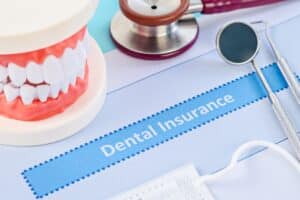Dental bridges are a common and effective solution for replacing missing teeth, restoring function, and improving the appearance of your smile. However, adjusting to life with a dental bridge treatment requires some dietary changes, especially during the healing process.
The foods you choose can significantly impact the longevity of your bridge, your comfort, and the health of your gums and surrounding teeth. In this blog, we’ll explore the best foods to indulge in after getting a dental bridge, helping you stay nourished while protecting your dental investment.
Why Does Your Diet Matter After Getting a Dental Bridge?
After a dental bridge treatment, your mouth needs time to heal and adjust. During this period, eating the right foods can:
- Protect your dental bridge from unnecessary wear or damage.
- Reduce pressure on your gums and natural teeth.
- Aid in healing and prevent discomfort or irritation.
- Support overall oral health by reducing the risk of infection or inflammation.
Choosing soft, nutrient-dense foods ensures that you not only heal smoothly but also maintain a balanced diet without putting strain on your new dental work.
Soft Foods: First Step After Dental Bridge Placement
During the initial days following your dental bridge procedure, it’s important to stick to soft, easily chewable foods. These foods require minimal chewing, helping avoid unnecessary pressure on your bridge while your mouth heals. Here are some of the best soft foods to indulge in:
1. Smoothies & Shakes
Smoothies are not only easy to consume but can also be loaded with fruits, vegetables, and protein to give you essential nutrients. Opt for:
- Fruit smoothies are made with bananas, berries, or mangoes.
- Green smoothies with spinach or kale for an added nutrient boost.
- Protein shakes to support muscle repair and overall recovery.
Tip: Avoid seeds or hard bits that may get stuck in your bridge.
2. Soups and Broths
Soups are a great choice because they are hydrating and can provide a wide variety of nutrients. Choose soups that are smooth and don’t contain tough chunks of meat or hard vegetables.
- Broths like chicken or vegetable broth are comforting and light.
- Blended soups such as tomato, pumpkin, or carrot are easy on your mouth.
Tip: Serve soups warm rather than hot to avoid irritating your gums.
3. Mashed Vegetables
Vegetables are key to maintaining a balanced diet, but they must be soft enough to avoid damaging your bridge. Some indulgent options include:
- Mashed potatoes (or sweet potatoes) with butter or olive oil.
- Steamed and mashed carrots, cauliflower, or squash.
- Avocados are naturally soft and rich in healthy fats.
Tip: Make sure the vegetables are well-cooked to avoid chewing stress.
4. Pasta and Soft Grains
Carbohydrates provide energy, and there are plenty of soft options that are easy to chew:
- Pasta dishes with soft sauces (such as tomato or cheese sauces).
- Rice or quinoa, which can be softened with broth or butter.
- Oatmeal, which can be flavored with honey or fruit.
Protein-Rich Foods: Keep Energy Levels High

Protein is crucial for healing and keeping your energy levels steady. After getting a dental bridge, focus on soft, tender proteins that are easy to chew.
1. Eggs
Eggs are an excellent source of protein and can be prepared in several soft, easy-to-eat ways:
- Scrambled eggs with cheese or herbs.
- Poached or soft-boiled eggs, which are gentle on your teeth.
Tip: Pair eggs with soft avocado or toast for a balanced meal.
2. Fish
Fish is typically softer than other meats and is a fantastic source of omega-3 fatty acids, which reduce inflammation and support healing.
- Baked or steamed salmon, which is soft and flaky.
- Tuna salad, made with soft ingredients like mayonnaise and avocado.
Tip: Avoid crunchy fish coatings and stick to soft-cooked varieties.
3. Yogurt and Cottage Cheese
Dairy products are packed with calcium and protein, making them perfect post-bridge foods. Indulge in:
- Greek yogurt with soft fruits like bananas or blended berries.
- Cottage cheese, either plain or with soft fruit.
Tip: Avoid yogurts with crunchy toppings or seeds.
Hydrating & Healing Foods
Hydration is key to overall health, especially when your mouth is healing from a dental bridge procedure. In addition to drinking plenty of water, consider adding these hydrating and healing foods to your diet:
1. Fruit Purees & Applesauce
Fruit purees are soft, easy to swallow, and packed with vitamins. Opt for:
- Applesauce or mashed bananas.
- Peach or pear purees, which are gentle on sensitive gums.
Tip: Make sure to choose low-sugar or unsweetened versions to protect your teeth.
2. Herbal Teas
Warm (but not hot) herbal teas can soothe the mouth and help with hydration:
- Chamomile or peppermint tea, which are calming and anti-inflammatory.
- Ginger tea, which aids digestion and reduces inflammation.
Adjusting your diet after getting a dental bridge doesn’t mean giving up delicious foods. By focusing on soft, nutrient-rich options, you can indulge in flavorful, satisfying meals while ensuring the longevity and comfort of your dental bridge.
Smoothies, soups, mashed vegetables, soft proteins, and hydrating foods will keep you nourished without putting unnecessary strain on your new dental work.
As you heal, it’s important to follow your dentist’s recommendations and reintroduce tougher foods slowly. By indulging in the right diet and avoiding potential hazards, you’ll ensure a smooth recovery and enjoy the benefits of your dental bridge for longer.





